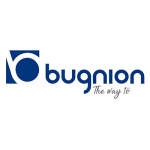The purpose of this article is to illustrate the complexity of the process for negotiating a FRAND licence for a standard essential patent (SEP).
SEPs are patents declared essential for implementing a technical standard, such as standards in the telecommunications field. The IP policy of standard development organisations (SDO) requires an SEP proprietor to declare that a patent might be essential for implementing the standard and declare irrevocably that he is available to licence the SEP on fair, reasonable and non-discriminatory (FRAND) terms, so that the technology protected by the SEP patent (included in the standard) is available to any interested party, by payment of a FRAND royalty.
SDO IPR policy does not define in detail the meaning of the terms fair, reasonable and non-discriminatory. These are evaluated on a case-by-case basis during a confidential negotiation between the parties or are made publicly available when a patent litigation decision is issued.
The parties who take part in FRAND negotiations are the proprietor of the SEP (SEP proprietor) and the alleged infringer of the patent (implementer).
First phase: negotiation
The FRAND process starts with the negotiation phase between the SEP proprietor and the implementer. The most important steps of the negotiation are defined by the landmark decision of the Court of Justice of the European Union (CJEU) Huawei Tech/ZTE dated July 1 2015, case C-170/13, which will be referred to hereinafter as the CJEU decision. This stipulates the requirements that must be fulfilled for the SEP proprietor to seek an injunction against the implementer without abusing its dominant position (Article 102, Treaty on the Functioning of the European Union (TFEU)).
First request for a FRAND licence by the SEP proprietor
The first step is carried out by the SEP proprietor who informs the implementer with a warning letter about the SEP and about the availability of a licence on FRAND terms.
According to the CJEU decision, the SEP proprietor is required to provide a notice including the number of the SEP, reference to the specific standard, details about the product(s) infringing the SEP and an explanation of the alleged infringement. Moreover, the warning letter indicates a deadline for receiving feedback from the implementer, after which the SEP proprietor can proceed with a request for an injunctive relief (if it does not receive any feedback from the implementer).
Willingness of the implementer
The second step is carried out by the implementer, who analyses the warning letter. At this stage the implementer performs a preliminary analysis of the validity of the patent and if it is really essential for the specific standard.
Regarding the preliminary analysis of the validity, the implementer checks if the patent is really granted and if it is granted after substantive examination of the novelty and inventiveness requirements by a patent office.
Regarding the preliminary analysis of the essentiality, it is necessary to remember that the declaration of essentiality of a patent for a standard is a self-assessment by the SEP proprietor. That is, neither the SDO nor the patent office who granted the patent checked in detail if the patent is really essential for the standard. In particular, the implementer should check whether the SEP patent is really included in the database of the relevant SDO and for which standard, in order to double check the information provided by the SEP proprietor.
After assessing that the patent is at first appearance valid and actually essential for the standard in question, the implementer has two possibilities:
reject the warning letter, incurring the risk of an infringement proceeding concerning the SEP patent;
enter into a negotiation with the SEP proprietor for a discussion about the grant of a FRAND licence.
Let's suppose that the implementer chooses the option of FRAND negotiation, the implementer will send a response letter to the SEP proprietor, indicating willingness to conclude a licensing agreement on FRAND terms.
NDA and first offer of a FRAND licence by the SEP proprietor
The third step is carried out by the SEP proprietor, after receiving the response letter. At this stage, the SEP proprietor usually asks the implementer to sign a non-disclosure agreement (NDA). The NDA might include a clause stating that the SEP proprietor will not sue the implementer during the FRAND negotiation, although this possibility is already dealt with in the CJEU Decision.
|
|
Criteria to be considered by the implementer for justifying the amount of the proposed royalty can be the amount of royalties already paid by other licensee(s) (if any) for the same SEP and the use (in terms of time) of the patented technology in the product. |
|
|
The NDA usually includes a clause defining the manner in which the SEP proprietor can terminate the NDA before its expiration date, so that the SEP proprietor can sue the implementer without violating the NDA in case the implementer delays the negotiation in bad faith. For the same reasons, the implementer should carefully choose the duration of the NDA. It should not be excessive. One year seems reasonable, with an automatic extension of one further year in case one of the parties does not inform the other about the termination.
Let's suppose that the implementer signs the NDA. The SEP proprietor gives the implementer a written offer for a licence on FRAND terms. Such an offer must include a proposed royalty rate and the manner in which that rate is calculated. The proposed royalty rate may be calculated as a percentage of the price of the single product infringing the SEP or as a percentage of the revenues from selling of the overall products.
Criteria to be considered by the implementer for justifying the amount of the proposed royalty can be the amount of royalties already paid by other licensee(s) (if any) for the same SEP and the use (in terms of time) of the patented technology in the product.
A recent decision concerning Sisvel and Haier dated May 5 2020 from the German Federal Supreme Court clarifies that implementers have to accept a FRAND offer, even if a lower amount was previously offered to a competitor (i.e. the SEP proprietor can request a higher rate), provided that suitable arguments are included by the SEP proprietor for justifying such higher rate.
Together with the written licence offer, the SEP proprietor often provides further details about the essentiality of the SEP, usually in the form of a claim chart mapping the features of the independent claim over the considered standard, if not previously provided in the first step. The SEP proprietor indicates a deadline for receiving feedback from the implementer, after which the SEP proprietor can proceed with a request for an injunctive relief. The deadline might be between four and six months.
Counter-offer by the implementer
The fourth step is carried out by the implementer, who analyses the written licence offer. According to the CJEU decision, at this stage the implementer is not prevented from challenging the validity of the patent and its essentiality, thus the implementer performs a deep analysis of the validity and essentiality of the patent.
Regarding the essentiality analysis, the implementer starts from the claim chart provided by the SEP proprietor. If not yet provided, the implementer can request such a claim chart from the SEP proprietor.
At this stage the implementer allocates all the internal human resources necessary for carrying out such an analysis, involving in-house or external patent attorneys, internal experts in the field of the specific standard and internal or external lawyers.
It is worth noting that the declaration of a patent to a SDO is usually carried out when the patent is pending and that a standard is usually approved after a long process requiring several intermediate versions, which can significantly differ from the final one. Therefore a declaration of an SEP could be obsolete (if not updated after the final version), either because at the time of the declaration the patent was pending with a scope of protection broader than the granted one or because the final version of the standard could be different. In the latter case, the standard could even not include the solution protected by the SEP any more or such solution could be optional and not essential. Moreover, the implementer carefully checks the proposed rate of the royalty and the way in which the royalty rate is calculated. Usually the rate of the royalty proposed by the SEP proprietor is higher than expected by the implementer. The implementer can provide a counter-offer at a lower rate and inform the SEP proprietor accordingly.
According to the CJEU Decision, the counter-offer of the implementer must also be FRAND and the implementer has to provide the details of the way in which the royalty rate is calculated, together with suitable arguments for proving that the royalty rate requested by the SEP proprietor was not correct. The implementer thus informs the SEP proprietor about the counter-offer and the details of the calculation of the new royalty rate. The SEP proprietor expects to receive the counter-offer in a short time, such as within one to three months.
According to the CJEU decision, at this stage, the SEP proprietor cannot sue the implementer. He has to wait for a response from the implementer within the requested deadline. Only after expiration of such deadline can the SEP proprietor proceed with a request for injunctive relief, if not receiving any feedback from the implementer, despite one or more reminders.
Evaluation of the counter-offer(s) by the SEP proprietor
The fifth step is carried out by the SEP proprietor, who analyses the counter-offer rate. The third and fourth steps can be iterated more than once, i.e. the SEP proprietor can make more than one licence offer and the implementer can make more than one counter-offer. The duration of such iterations differs on a case-by-case basis and it can last one year or more, but reasonably, it should not exceed two years.
|
|
Usually the rate of the royalty proposed by the SEP proprietor is higher than expected by the implementer. The implementer can provide a counter-offer at a lower rate and inform the SEP proprietor accordingly. |
|
|
If the SEP proprietor is satisfied with the last counter-offer of the implementer, an agreement is reached and the negotiation process terminates successfully. If the SEP proprietor is not satisfied with the last counter-offer or if the SEP proprietor considers that the behaviour of the implementer is in bad faith (for example, because of delaying tactics), the negotiation process terminates unsuccessfully and the parties can request a court or an arbitration court to determine the FRAND licence.
The court is often asked for a decision, either by the SEP proprietor who sues the implementer for infringing the SEP, or by the implementer who sues the SEP proprietor to invalidate the SEP and/or for a non-infringement declaration.
Second phase: SEP litigation
When the negotiation ends without reaching an agreement, a patent lawsuit is usually filed by the SEP proprietor, requesting injunctive relief against the implementer. Before filing the lawsuit, it is advisable for the SEP proprietor to check if the NDA between the parties includes a clause stating that the SEP proprietor will not sue the implementer during the FRAND negotiation. If this is applicable, the SEP proprietor further checks if the NDA allows the revocation of such a constraint by informing the implementer of the intention to revoke the NDA:
If positive, the SEP proprietor informs the implementer accordingly.
If negative, the SEP proprietor has to wait for the expiry of the NDA term.
Let's suppose that the SEP proprietor is authorised to file a lawsuit, either because the term of the NDA has expired or because it is terminated by the SEP proprietor. The first issue to evaluate for the SEP proprietor is to whom to address the lawsuit, especially when the implementer is a multinational company with headquarters and several subsidiaries elsewhere in the world.
It is advisable to sue the same legal entities with which the FRAND negotiation took place, otherwise there is the risk that the injunctive relief request will be rejected because the requirements of the CJEU decision are not fulfilled (i.e. the SEP proprietor didn't alert the sued party, but another one). If the lawsuit is started correctly, the judge may order the implementer to provide a bank guarantee or to deposit funds at the court, in respect of its past and future use of the SEP.
The essentiality of the declared SEP patent is checked for the first time during the course of the lawsuit. Parallel lawsuits for the same SEP could be pending in other countries or can be terminated. Although the decisions of such lawsuits are not legally binding for the country in question, they are often taken into account by the judge and thus it is convenient to cite the decisions in other countries, either for the SEP proprietor or for the implementer, depending on the outcome of the foreign decision.
The outcome of the decision can be one of the following:
a licence is imposed on the implementer, with a precise royalty rate;
it sets the terms of a licence which the implementer has to accept, in order to avoid injunctive relief;
it issues injunctive relief against future infringement, i.e. preventing manufacturing and selling of the products (decision Huawei/Samsung of January 11 2018, Shenzhen Court), with or without compensation for past damages.
The above points on the FRAND process are not exhaustive, but they provide an overview of the complexity of the process and of the skills required to manage a successful negotiation and litigation.

Giancarlo Penza
Giancarlo Penza has a Master of Science in telecommunications engineering from the University Politecnico in Milan (Italy). He was a CAD engineer at ST Microelectronics where he worked on analogue and digital design of integrated circuits, electric simulation and layout in CMOS technology. He also worked on firmware and digital design in VHDL for FPGA for equipment for optical telecommunications networks at Alcatel.
He was a patent engineer at Alcatel-Lucent. Here, he drafted and filed European patent applications for optical telecommunications networks and carried out corresponding prosecution in Europe, the US, China and Japan.
He was then a patent attorney in an Italian intellectual property firm where he drafted Italian, European and international patent applications in the fields of electronics, software and telecoms and carried out corresponding prosecutions in Europe, the US and China. He also drafted patentability and infringement opinions.
He has been a technical consultant for patent lawsuits before Italian courts. Penza has worked at Bugnion since April 2013. He deals with patents in Italy, Europe, the PCT, the US, China, Japan and Canada in the fields of electronics, software and telecoms.












